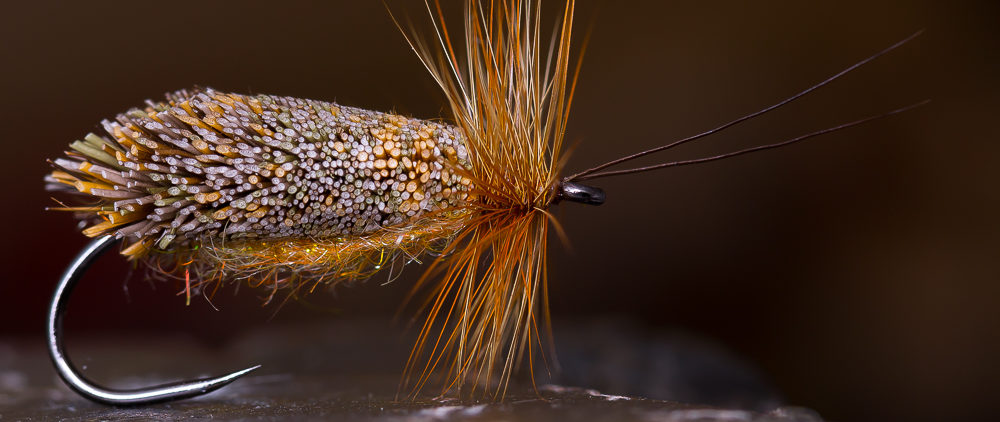One of my most fished patterns for pike. It’s easy to tie, very durable, you can tie it in the length you want and it wiggles nice through the water. You can also use arctic fox for the front collar instead of finn raccoon. Works well, too.
Materials:
- Hook: Gamakatsu F 314 # 1/0
- Ribbing: Mono
- Body: Ice Dub Holographic Silver and Ice Dub Pearl mixed together
- Wing/Tail: Finn Raccoon
- Flash: Gliss’n Glow Pearl, Krinkle Mirror Flash Pearl and Lateral Scale Pearl
- Front Collar: Finn Raccoon or Arctic Fox
- Hot Point: Fluo Thread
- Eyes: Deer Creek
- Head: Bug Bond
Tie in a piece of mono for the ribbing and mix ice dub pearl and ice dub holographic silver. Then split the thread and put the dubbing mix into the gap. Spin the bobbin to twist the dubbing. Wind the dubbing hank around the hook shank and give it a good brush with your velcro.
Tie in a piece of finn raccoon zonker 5mm next to the hook eye. Then ribb the raccoon zonker with the mono to secure it on the hook shank and catch the mono with your thread.
Tie in the krinkle mirror flash and the gliss’n glow. Then form a loop with your thread and wax the loop. Put a piece of finn raccoon in the loop and cut away the leather. Twist the loop with the raccoon slowly. When the fur is secured in the loop, wind the raccoon around the shank to the hook eye. Comb the twisted raccoon after every turn.
Tie in a strand of lateral scale pearl on each side and split the thread. Put again some dubbing in the gap und twist the bobbin Wind the twisted dubbing around and brush it with your velcro to give the head some extra sparcle.
If you like it, you can do a little hot point with some fluo thread. Glue some sexy eyes on the head and secure the head with Bug Bond.
Ready for pike!
tl Holger Lachmann





































































